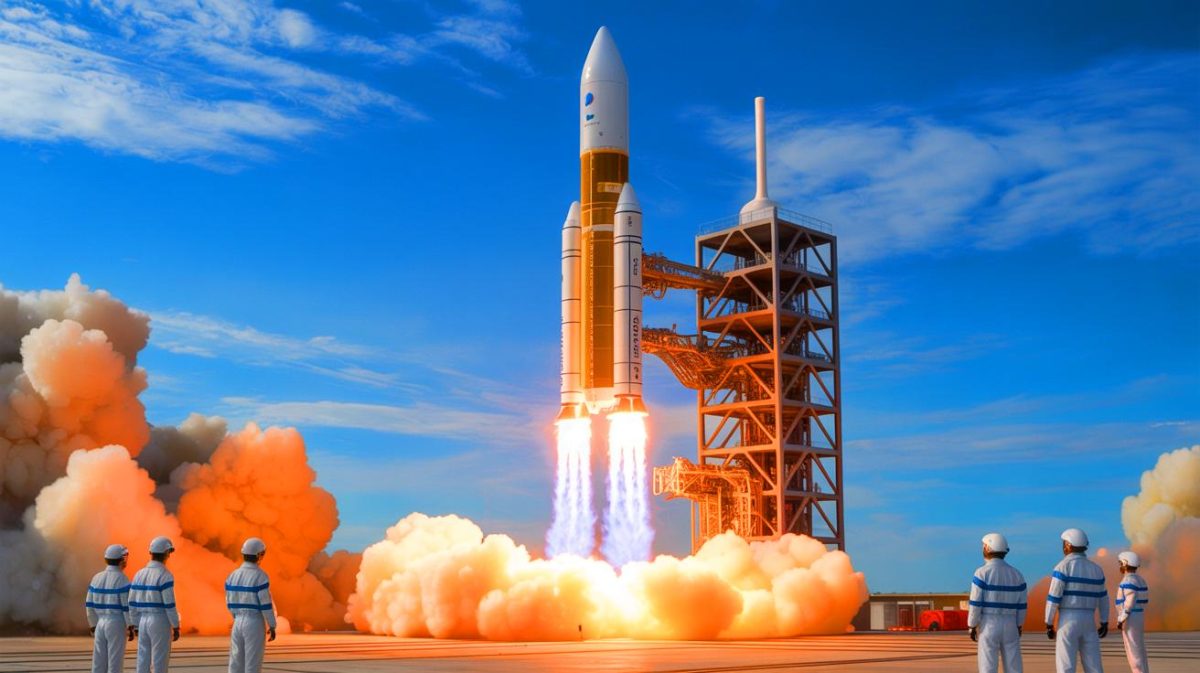| IN A NUTSHELL |
|
In a significant stride for aerospace technology, Venus Aerospace has successfully tested a Rotating Detonation Rocket Engine (RDRE) at Spaceport America in New Mexico. This event marks a critical advancement in the pursuit of hypersonic travel. The RDRE, employing supersonic explosions for thrust, promises a transformation in high-speed propulsion systems. Set against the backdrop of a competitive aerospace industry, this breakthrough paves the way for more efficient and accessible travel solutions. As Venus Aerospace pushes the boundaries of what’s possible, the implications extend to both civilian and military applications, offering a glimpse into the future of transportation.
The Technology Behind Rotating Detonation Rocket Engines
The Rotating Detonation Rocket Engine (RDRE) represents a revolutionary step in propulsion technology. Unlike conventional engines that rely on continuous combustion, the RDRE harnesses supersonic explosions to produce thrust. This process involves a series of controlled detonations within a combustion chamber, generating a high-velocity exhaust stream. The engine’s design features an empty cylinder where a mixture of fuel and oxidizer is introduced and detonated. This generates a shock wave that travels in a circular path, continuously compressing and consuming the unburned propellant.
Developed from theoretical concepts proposed in the 1980s, this technology has only recently become feasible for practical application. The RDRE’s design offers higher thrust-to-weight ratios and increased combustion efficiency compared to traditional engines. These advancements are crucial for enabling hypersonic travel, where vehicles can take off and land like conventional aircraft. By achieving greater efficiency, the RDRE has the potential to revolutionize the aerospace industry, making high-speed travel more feasible and sustainable.
The Role of the VDR2 Air-Breathing Detonation Ramjet Engine
Complementing the RDRE is the VDR2 air-breathing detonation ramjet engine, a key component in Venus Aerospace’s hypersonic ambitions. The VDR2 utilizes the vehicle’s forward velocity to compress incoming air, enabling the engine to operate at hypersonic speeds. This design, which appears as an empty tube, lacks moving parts and relies on a conical inner body to manage shock waves and slow airflow to subsonic speeds. Such a design is essential to prevent structural damage to the engine.
One of the primary challenges of ramjet engines is their need for high initial speeds to start the engine cycle. Typically, this requires a booster rocket or a launch from a high-speed aircraft. However, by integrating the RDRE with the ramjet, Venus Aerospace has created a hybrid propulsion system capable of conventional runway takeoff and landing. This synergy of technologies could redefine hypersonic vehicles, enhancing their versatility and practicality across various applications.
Venus Aerospace’s Ambitious Goals for Hypersonic Travel
The successful test of the RDRE is a part of Venus Aerospace’s broader vision to create hypersonic vehicles capable of reaching speeds up to Mach 6. The company aims to extend these capabilities beyond military uses, making high-speed travel accessible and sustainable for civilian purposes. Venus Aerospace’s ultimate objective is to power the Stargazer M4, a Mach 4 reusable passenger aircraft, with advanced RDRE technology.
Although the recent test involved a near-vertical launch, future experiments will incorporate the VDR2 engine within drones to validate the technology under practical conditions. These efforts are crucial for realizing Venus Aerospace’s vision of revolutionizing air travel. According to CEO Sassie Duggleby, the technology promises to make high-speed flight both affordable and environmentally friendly, opening new possibilities for global connectivity and reducing the environmental impact of air travel.
The Implications of Hypersonic Propulsion Technology
The implications of successfully testing the RDRE extend far beyond the immediate technological achievements. Hypersonic vehicles powered by such engines could drastically reduce global travel times, reshaping perceptions of air travel. The capability to take off and land on conventional runways increases the practicality of these vehicles for commercial use, potentially transforming the aviation industry.
In addition to civilian applications, hypersonic propulsion technology offers strategic advantages for military operations, providing rapid response capabilities and enhanced maneuverability. As Venus Aerospace advances its technology, challenges related to broader adoption and regulatory considerations remain. Nonetheless, the company’s achievements signify a promising step toward a future where high-speed travel becomes commonplace.
As Venus Aerospace nears its goal of mainstreaming hypersonic travel, the potential impact on global connectivity and aerospace innovation is substantial. What new possibilities will this propulsion technology unlock, and how might it reshape our world?
Did you like it? 4.5/5 (20)







Wow, ça fait rêver! Mais est-ce que c’est sûr pour les passagers? 🤔
Impressionnant! Mais ça va coûter combien tout ça au final?